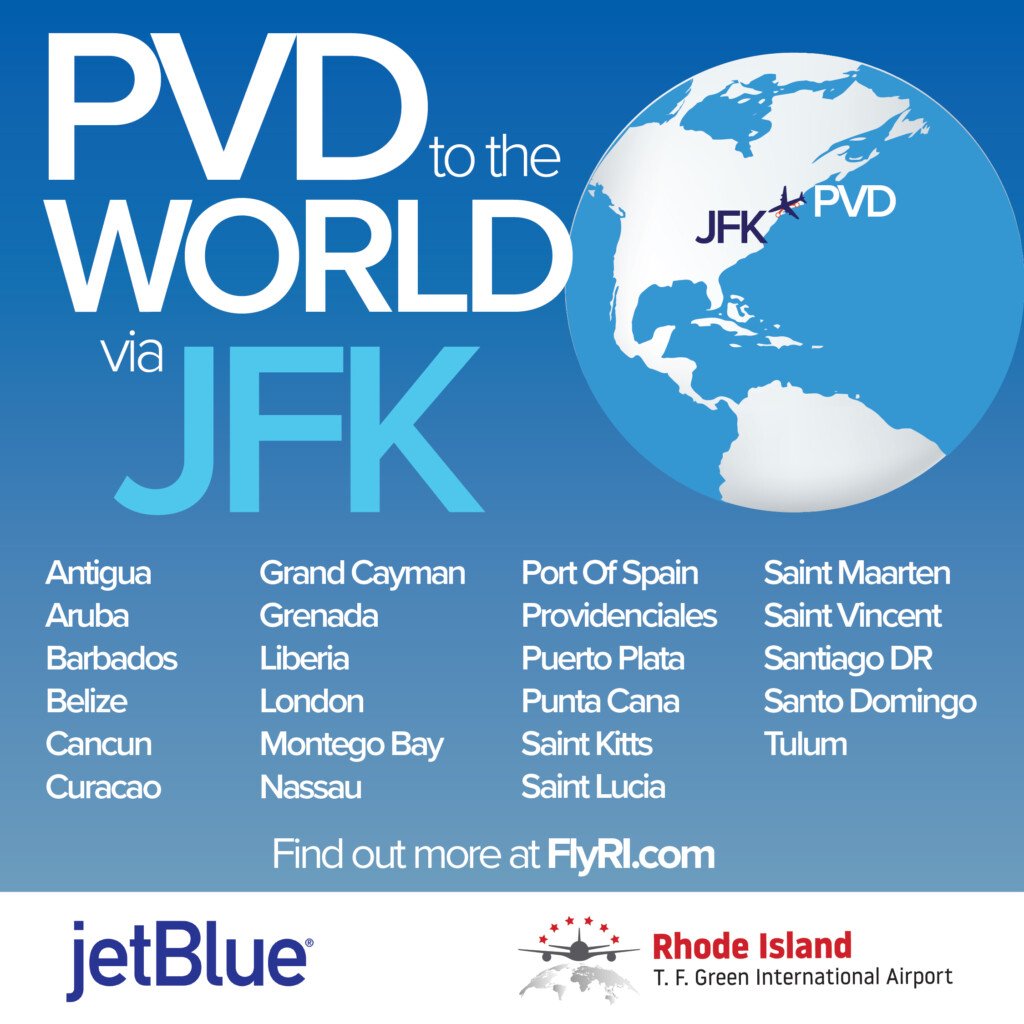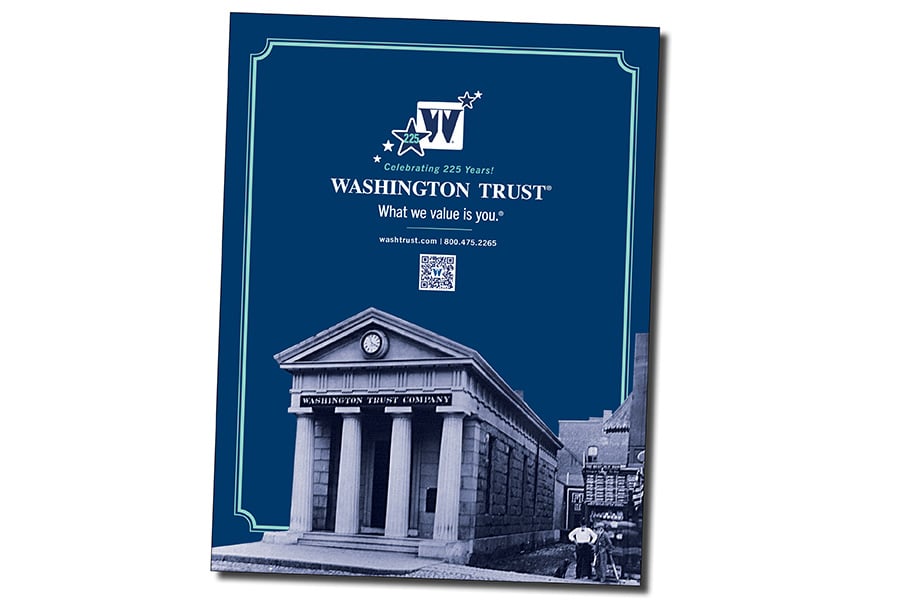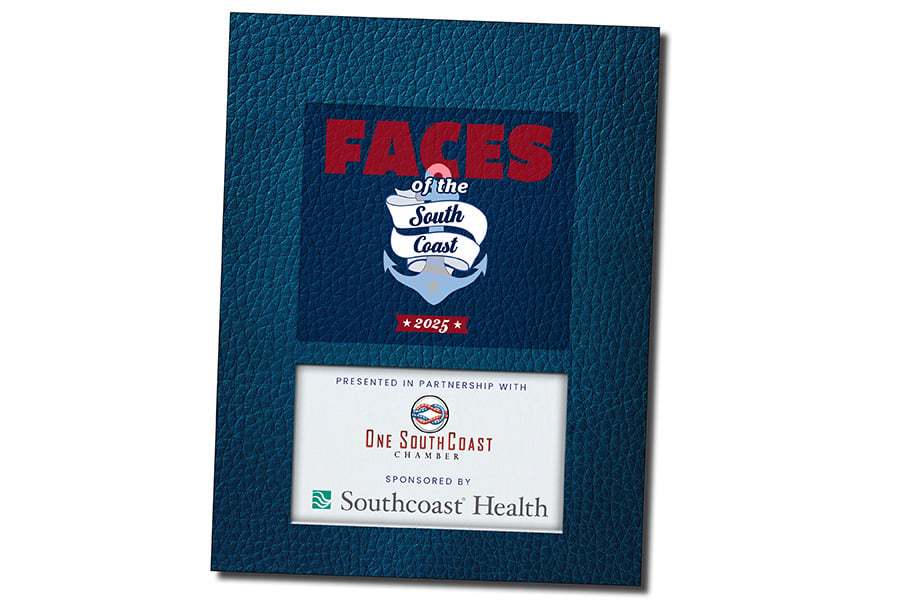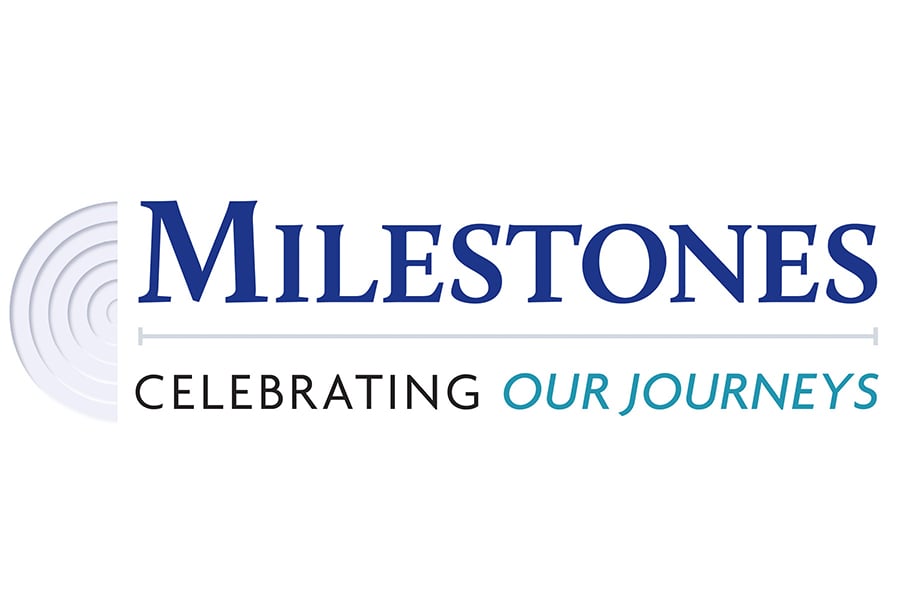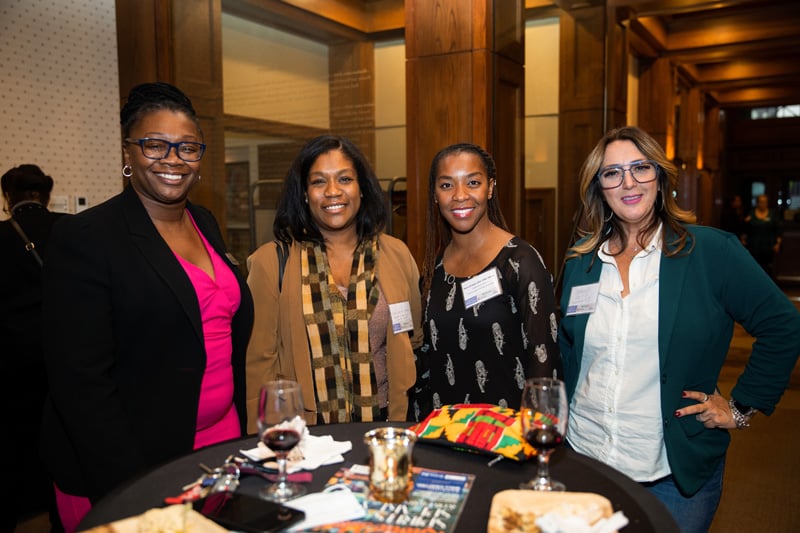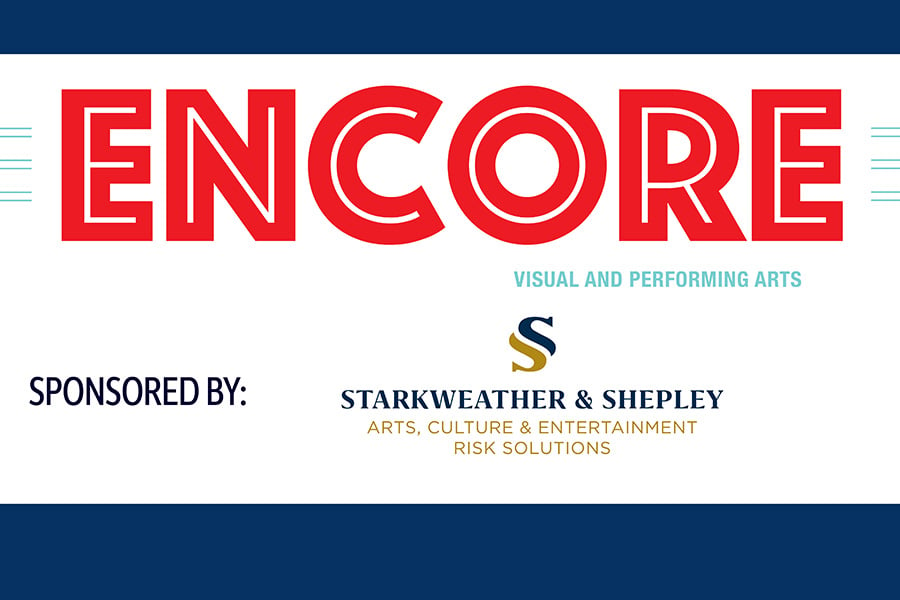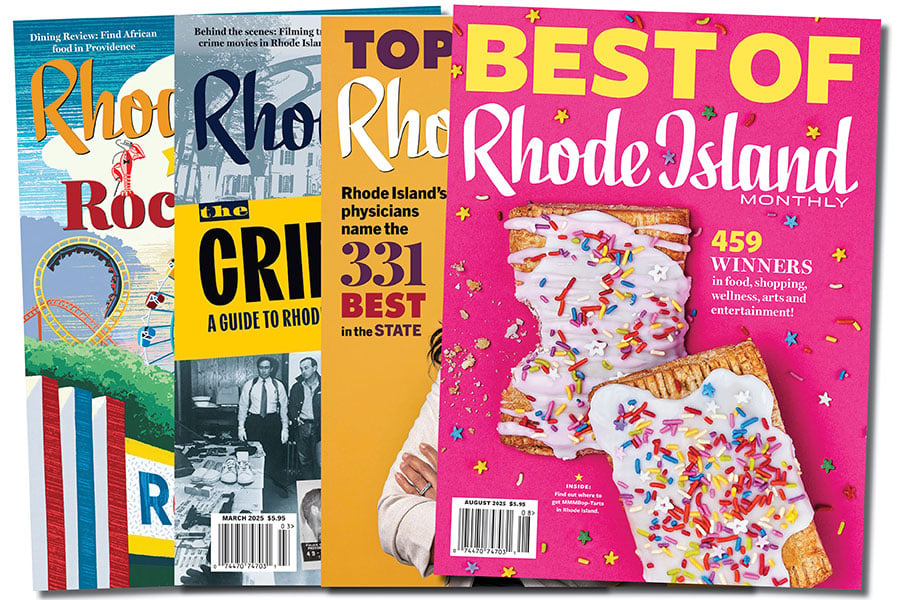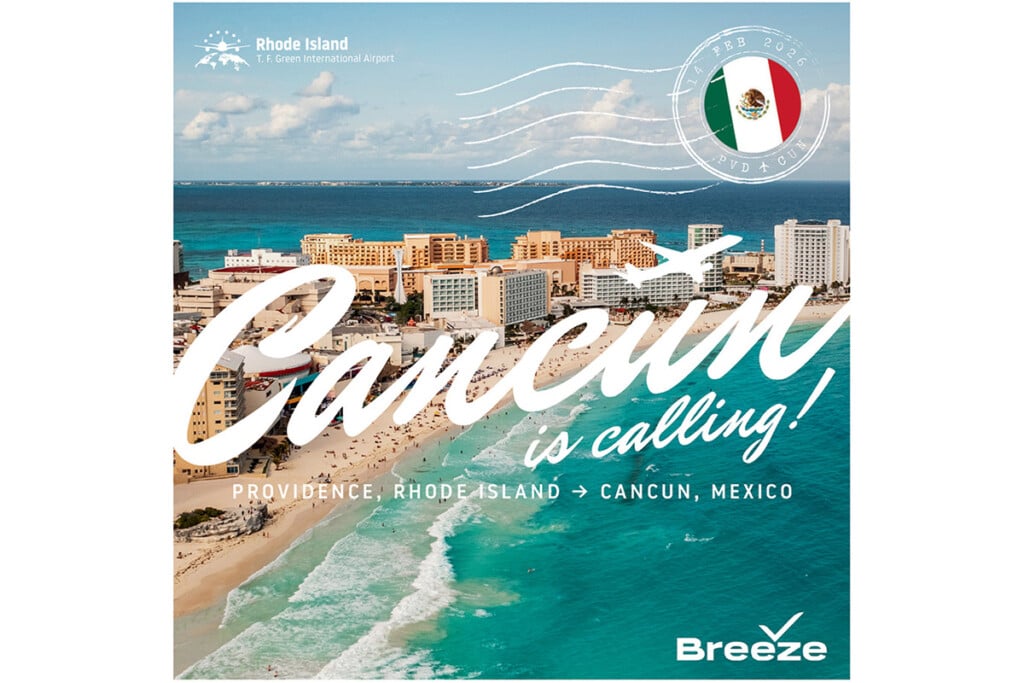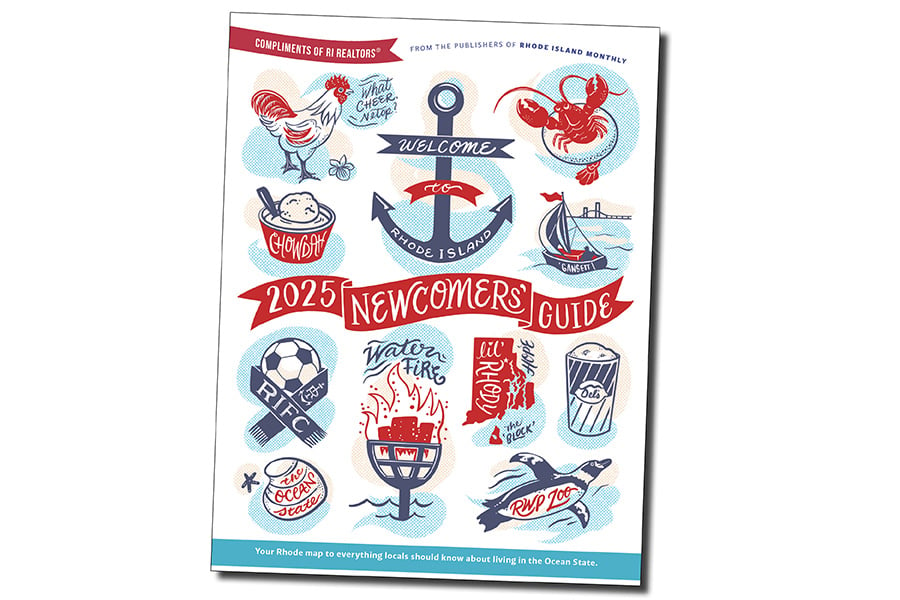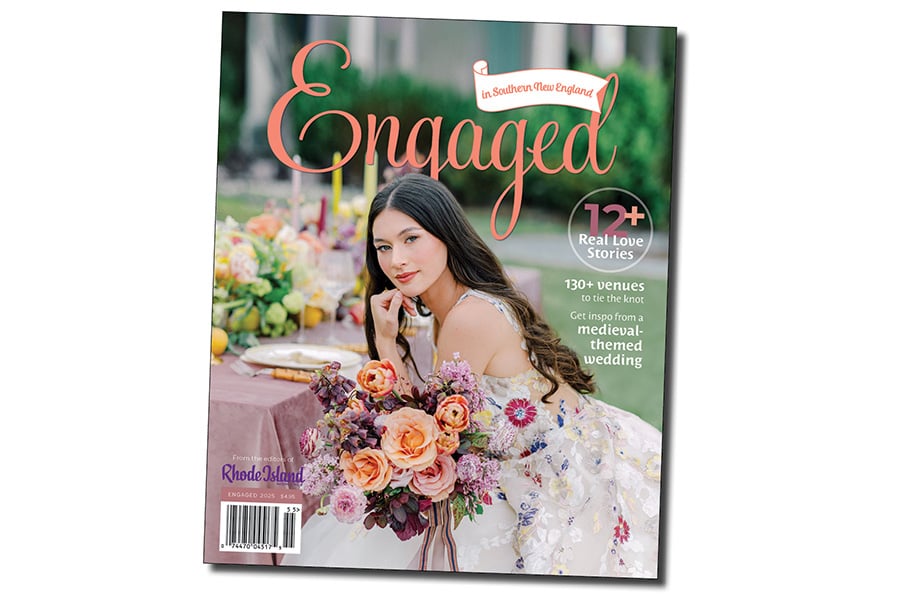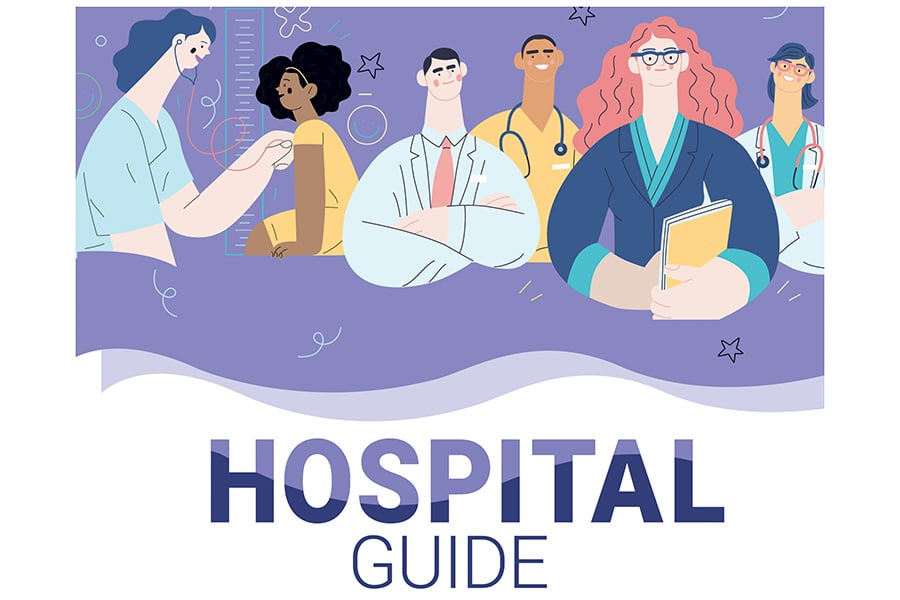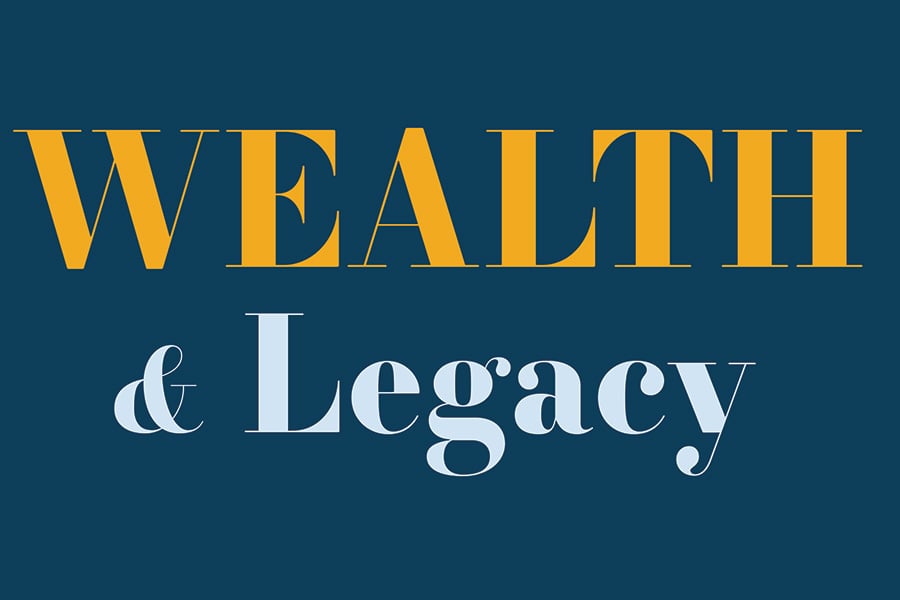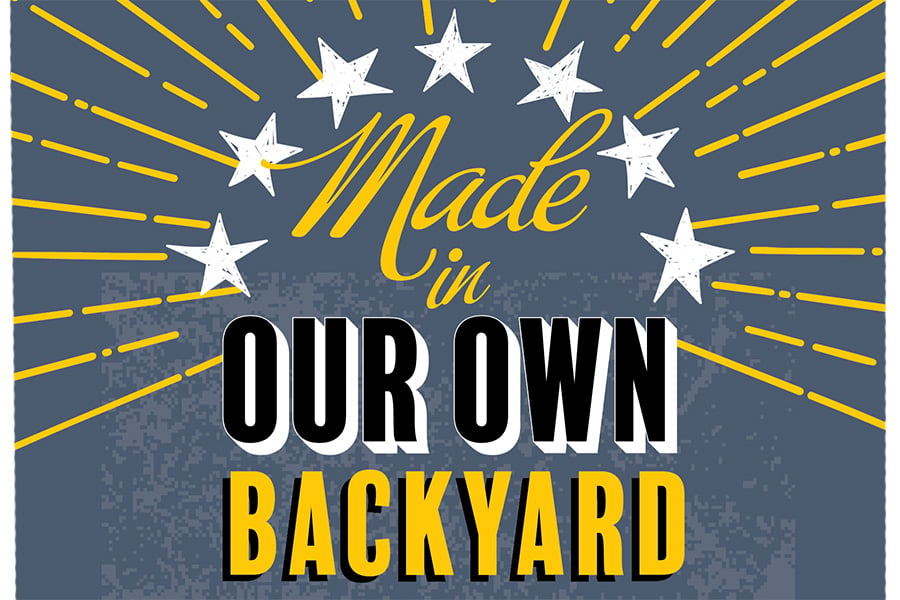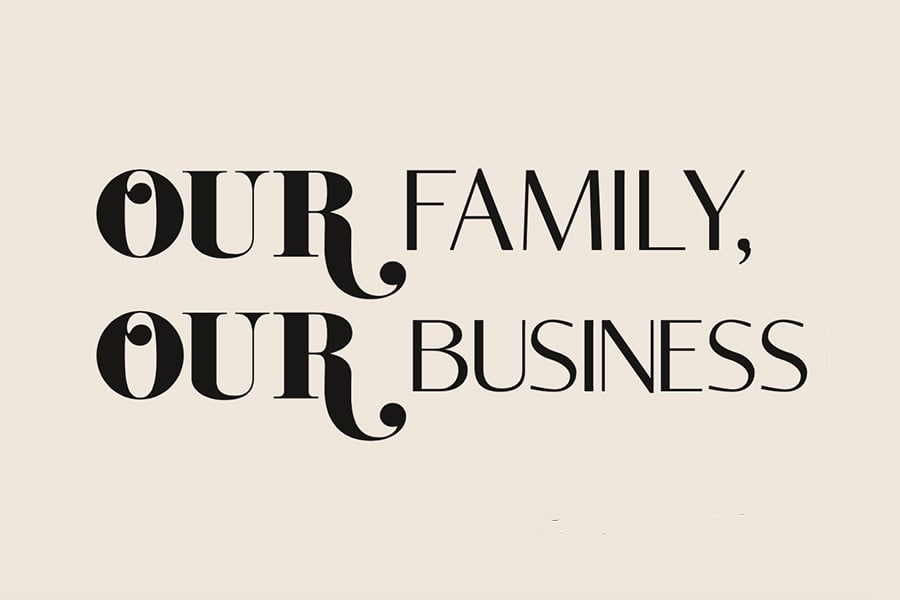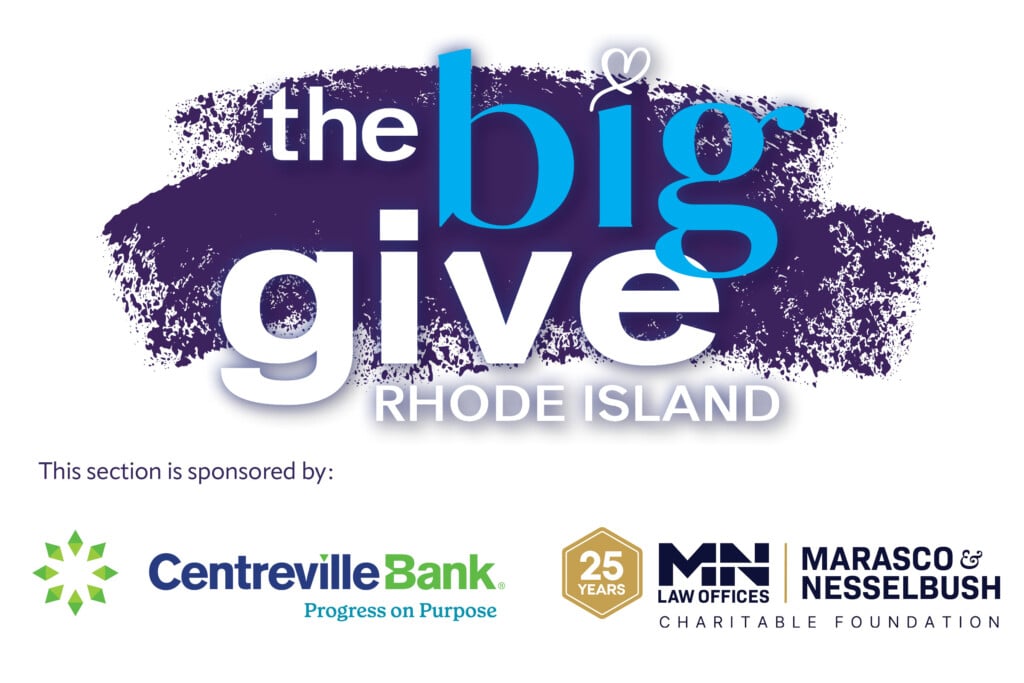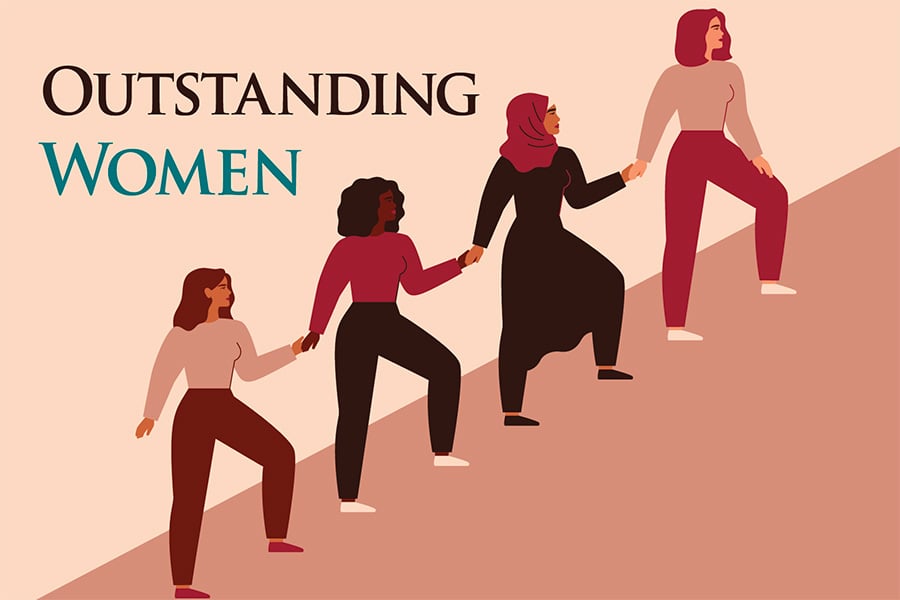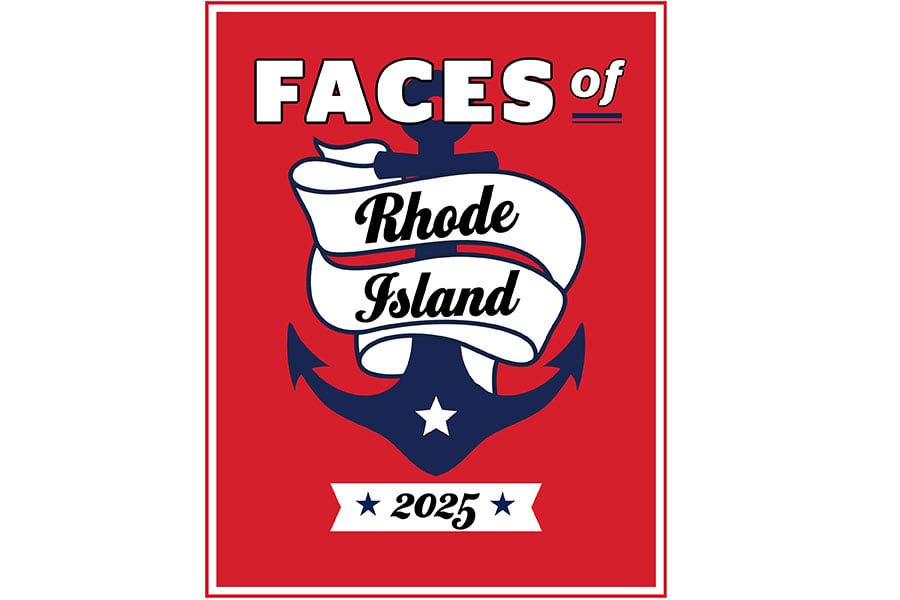Q&A with Filmmaker Ken Burns
The acclaimed documentarian sat down with Rhode Island Monthly during a stop in the Ocean State to promote his new film, 'The American Revolution.'

Ken Burns speaks to the audience at Rhode Island College in Providence during a stop to promote his new documentary, ‘The American Revolution,’ which premieres in November. Photo by Dana Laverty.
Acclaimed filmmaker Ken Burns recently stopped in Rhode Island to promote his new documentary, The American Revolution, premiering on PBS stations in November.
This year marks the 250th anniversary of the start of the war, when British and American forces came to blows in Lexington and Concord, Massachusetts, in April 1775 after years of tension between both sides. Or, to hear most Rhode Islanders tell it, the Revolution truly began off the shores of Warwick in June 1772, when enraged Colonists set fire to the HMS Gaspee in one of the first acts of rebellion against the crown.
You can decide for yourself in the first episode, “In Order to Be Free,” which chronicles both skirmishes. It premieres Sunday, Nov. 16 at 8 p.m., with the five other episodes airing nightly through Friday, Nov. 21.
The twelve-hour series took Burns — along with co-directors Sarah Botstein and David Schmidt — ten years to make. It chronicles the fight for independence and the enormous breadth of the conflict, which Burns calls a civil war, a war for independence and a world war that affected millions.
It contains points of view from more than 200 historical figures read by actors including Tom Hanks, Maya Hawke, Meryl Streep and Samuel L. Jackson; thousands of paintings, letters and maps culled from museums, libraries and galleries; historian interviews; battle reenactments; and original footage from more than 100 locations throughout the thirteen Colonies and overseas in London.
Burns and Botstein have been on the road since January, showing clips from the series, taking part in panel discussions and visiting classrooms throughout the country in anticipation of the premiere. In Rhode Island, they toured the State House and hobnobbed with state officials before showing parts of the film to a packed house at Rhode Island College.
They carved out a few minutes to sit down with Rhode Island Monthly for an exclusive interview during their time in the Ocean State, chatting all things puzzles (Burns is a New York Times crossword aficionado), the importance of highlighting overlooked voices in the documentary, and the strength of our democracy during these unprecedented times.
I hear you’re a big New York Times crossword fan. Any hints for helping me with the Saturday puzzles?
Ken Burns: I can remember when Saturdays were an Everest that I couldn’t get to, but you just keep going. You just keep working and working and working. They’re hard. They’re really hard. I did it in ink and still keep it by my bedside, because one of the things that helps me go to sleep is doing a crossword puzzle in ink. But after COVID, I moved online. My daughter set me up with it online. So I do it, but I make a challenge, which is I do it walking, which makes it a little bit harder to do.
Thanks for the advice. I’ll keep plugging away! So I just wanted to ask a few questions about the series. As you mentioned last night [at Rhode Island College], it’s been about a decade in the making. When did you start thinking about it?
Burns: We were finishing our film on the Vietnam War. It was December of 2015; we still had a year and a half to go before the broadcast, but because of the size and the scope of the series, we were beginning to lock [finalize] episodes. And I just said, ‘We’re going to do the American Revolution next.’ It was a gut situation based on looking at a map that we were using of this central highlands and realizing that maps would be important to that. But it was more getting over an essential anxiety about how do we do it where the subject has no photographs or no news reels. That has not stopped us in other films we’ve done, but doing the American Revolution meant that it would be many episodes, and that would provide a more daunting challenge. But somehow, at that moment, I thought, ‘We can do it.’ So nine years and eleven months later, when we broadcast, we’ll see the fruits of that light bulb going off.
This is such an enormous project. How do you take that initial first step?
Burns: We start with the idea, and we do a lot of reading. We consult with scholars. We film those scholars. We start working on a script. We continue to refine that script over years and years and years. We start shooting before there’s a script; not just the interviews, but live cinematography and reenactments, in this case, and many other things. We begin to collect and bring into our system thousands of documents and paintings and drawings and maps that will bring it alive. The whole process is using that material over time to try to figure out how to tell the story.
Last night you mentioned some of those stories — how you tried to find stories from people who were unheard of. Are there any that stick out in your mind?
Sarah Botstein: I think we all have our favorites. One of the things that’s important for people to think about, which I hadn’t thought about, is that North America was a fairly literate community. We were a pretty well-educated world, and people wrote down their recollections and memories, either just after the war or during the war. There were lots of letters, there were lots of pamphlets, there was lots of correspondence. Having said that, there were also whole populations that didn’t have a lot of archival records left for them. But the last fifty years of scholarship have really brought a lot of that to life.
We were able to do research and find a character named Betsy Ambler, who we read a little bit about in a book. And then David Schmidt got totally obsessed with Betsy Ambler. He’s also from that part of the world and followed footnotes and found a collection of her materials. And we really brought her to life. Then we have Native American characters who many Americans haven’t heard of. I think that’s the one big takeaway from the series: how central the Native American experience is to the American Revolution, as well as free and enslaved black people and women — more than half the population — were essential to the war effort, to getting people involved and inspired to fight in the war. They traveled with the armies some of the time. They kept their homesteads functioning and worked in the communities and made shirts and supported the troops.
And women are always at the heart and the center of any war, as they are in any community. We were able to bring a lot of those voices to life. We are all big fans of Abigail Adams. One of her best friends during the war is a woman named Mercy Otis Warren, who was a satirist and wrote plays and all kinds of interesting stuff in the 18th century. She was one of the first people to chronicle the American Revolution as a historian, and she’s read beautifully by Meryl Streep. So it’s a cast of great female scholars of different generations and young girls and older women, all of whom were essential to the fight and part of the history.

Co-producer Megan Ruffe speaks with reenactors from the 1st Rhode Island Regiment during filming for ‘The American Revolution.’ Photo by Jonah Velasco.
It really struck me how you opened the film with the Haudenosaunee Confederacy.
Burns: I think you can pass your elementary school test on the causes of the Revolution by saying taxes and representation. And that would be pretty accurate, but it neglects the main thing, which is Indian land. The thirteen Colonies are superimposed over land that over the previous 150 years they’d gradually taken from Native Americans, and the next 150 years after the Revolution will be the completing of the continental appropriation of that land. It’s really important to understand so much of that story is left out of the accounting of what caused the Revolution. Putting the story of the Haudenosaunee, the Iroquois Confederacy, at the front of the film puts it in perspective.
It’s also interesting that the Haudenosaunee, which is a confederacy of six Native nations in upstate New York and Canada, is the inspiration for Benjamin Franklin to suggest that these disunited Colonies might want to think about being united. So one of the great ironies and one of the great inspirations is this story of the Haudenosaunee. And the great tragedy is that the Revolution will destroy their democracy that had been functioning for centuries.
Botstein: I think the other piece of the causes of the war, particularly because we’re in Rhode Island right now, is in Boston. As things begin to escalate, when the standing army shows up and the citizens are dealing with the fact that there’s a standing army in their community, inspires and ignites a fair amount of resistance to the notion that you would have an army there to police your own citizenry. That’s a big moment for the war.
You live in New Hampshire [Burns] and New York [Botstein]. Does this project have special meaning to you because of that, being in the middle of where it all happened?
Burns: I think so. I take a three-mile walk every morning with my dog and bring my phone. For years and years I’ve recorded hundreds of images on my phone camera, of which maybe thirty are in the final film. Two are in the introduction and blended in with much more professional cameras. I had a sense as I was walking, that I was walking in steps that weren’t that far removed in the way they looked in the late 18th century, which is a great feature of particularly New England and other parts of the Eastern Seaboard.
Conversely, I spent a lot of time in New York, near where Sarah lives, where you feel the presence of this city which was in British hands for seven-plus years of the war. And I think people will go, ‘What?’ Washington loses it on Sept. 15, 1776, and he doesn’t get it back until late November of 1783. The idea of New York City being not only a Loyalist stronghold, but the British headquarters for most of our Revolution is stunning to most people.
Botstein: Half of our team lives on the on the top of the Battle of Long Island, which is the Battle of Brooklyn, and get their groceries at Trader Joe’s in Cobble Hill, which has a big plaque. I’m embarrassed to say I hadn’t given a lot of thought to the fact that we lived in enemy territory.
I also live part of my life in the Hudson Valley on the banks of the Hudson River. And just like Ken was able to walk and film beautiful stuff for the film in a timeless way, because we filmed so much of this series during COVID, we were able to film on the banks of the Hudson, which is an extremely historic point. I got to walk out of my driveway onto this majestic river, and think about the fact that armies traveled by foot, by four-legged creature and wheels, and also the waterways were the highways, as Ken always says. And Nathaniel Philbrick makes the point in the film that part of the Revolution is how you got from A to B, and what the weather was like before the age of the Weather Channel.

Karin Wulf, director of the John Carter Brown Library, Sarah Botstein, Ken Burns and Pam Johnston, president and CEO of Ocean State Media, during a panel discussion at Rhode Island College. Photo by Dana Laverty.
I also wanted to ask about the PBS federal funding cuts. Did that affect the project at all?
Burns: It did not affect our project. This was a rescission that took place in July, and it affected the project that Sarah and I are working on, LBJ & the Great Society. Money that had already been authorized and appropriated — $4 million for that project — disappeared as a result and we are in discussions for 10 more. So you could say the hit was either $4 million or $14 million.
It’s an incredibly short-sighted decision. PBS will survive. We’ll survive. We’ll figure out how to make that up. The problem is there are a lot of rural communities, rural stations, that will go out of business, and those areas will become news deserts for their citizens. That’s a tragedy a little bit of foresight would have avoided. The Corporation for Public Broadcasting was an entity that’s been in existence for more than fifty years and distributing grants mostly from the bottom-up, not just to filmmakers, but to the local stations. PBS has 338 affiliates, and we’re going to see a lot of them die over the next few years as a result of this very short-sighted decision.
I believe last night you called it an assassination.
Burns: Yeah, I think in some ways it did get murdered.
It’s the 250th anniversary of the start of the war. There’s so much going on in the country right currently that seems to be testing democracy’s limits. What do you think of the series coming out now, as opposed to say, fifteen years ago? Do you think it has more relevance now?
Botstein: I think it’s exciting that the film is coming out now. We talk about this a lot. It takes a long time to make our films. We don’t know what’s going to be happening in the world when they come out. As we were making this, we realized — I mean, we’re not living under a rock and 2026 is upon us — and decided, for a number of reasons, to come out a little bit ahead of everything happening in 2026. I feel really glad that we’re able to do that, A, because we get to be part of the conversation early and B, because we get to take advantage of PBS Learning Media and get lesson plans and educational materials into classrooms, not just for this school year, but for next school year.
We want to be part of the conversation. There’s a lot to learn from our founding, there’s a lot to think about when it comes to what the founders themselves wanted this country to be, and the debates that they had about the role of government in our lives, the role of states versus federal power, how we should embrace and believe in the separation of religion, church and state, all kinds of things that are central to the American experiment that I think are worth remembering, what the debates were in our founding and what we’ve done well over 250 years and what we haven’t done so well. So the timing feels good, if not surprising.
Burns: I’ll take issue with your question — the way you phrased it. Our film ends on a quote from Benjamin Rush, who says, ‘The American war is over, but the American Revolution is still going on.’ I don’t think we’re testing the limits of our democracy. I think we’re testing the limits right now of autocracy, and that, I think the great promise of the Revolution is that we have not yet found out, and we have now arrested for a time being, the testing the limits of the democracy. That story I’m interested in following.
RELATED ARTICLES
Why Does Rhode Island Have Such a Full House?
Q&A: Mike Lester of the Upcoming French Bistro Memere’s
Rhody Spotlight: The Latest Celebrity Sightings and Filming News



